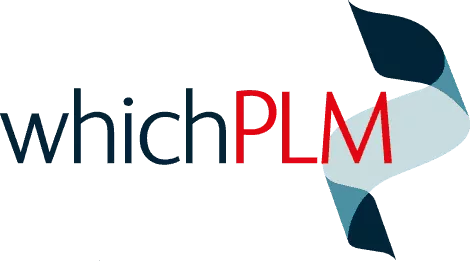Environmental sustainability has become a top priority across industries in today’s rapidly changing world due to climate change. The fashion industry, in particular, faces increasing pressure to adopt eco-friendly practices and reduce its high environmental impact. Combining PLM with sustainability initiatives can help businesses design and understand their impact on the environment in real-time.
Key Takeaways:
PLM solutions can help fashion businesses adopt eco-friendly practices and reduce their environmental impact. PLM offers a robust solution to track and report sustainability metrics, ensuring that fashion companies can demonstrate their commitment to sustainable practices.
By integrating sustainability criteria into the PLM process, businesses can align their product strategies with environmental goals and drive positive change.
Supply chain transparency is a critical aspect of sustainability in fashion, and PLM provides real-time data that helps build trust and accountability throughout the supply chain.
By leveraging PLM to drive sustainability initiatives, fashion companies can differentiate themselves from competitors and align with the values of their target audience.
Ultimately, PLM is a powerful tool that has the potential to reshape the fashion industry by empowering brands to navigate towards a more responsible future.
Environmental sustainability has become a top priority across industries in today’s rapidly changing world due to climate change. The fashion industry, in particular, faces increasing pressure to adopt eco-friendly practices and reduce its high environmental impact. As fashion businesses embrace the transformative potential of Product Lifecycle Management (PLM) solutions, also integrating sustainability solutions and practices into their operations is critical. This article explores the key drivers and benefits of combining PLM with sustainability initiatives in the fashion industry, many of which are helping businesses design and understand their impact on the environment in real-time. By harnessing the power of PLM to address ecological challenges, businesses can not only meet compliance requirements, but exceed them and pave the way for a more sustainable and responsible future.
PLM’s Role in Fashion’s Sustainable Future
PLM provides a centralised platform to manage and optimise sustainable design, product development, and manufacturing. Using PLM’s extensive data libraries can enable fashion brands to make eco-friendly choices, prioritise ethical sourcing, and improve supply chain transparency from design, from production to final delivery to the consumer. By integrating sustainability criteria into the PLM process, businesses can align their product strategies with environmental goals and drive positive change.

Meeting Sustainability Regulations and Global Goals
As environmental legislation and sustainability regulations become more stringent worldwide, PLM offers a robust solution to track and report sustainability metrics. By automating data collection and analysis, PLM streamlines the compliance process, ensuring that fashion companies can demonstrate their commitment to sustainable practices. Additionally, PLM provides a platform to show their alignment with global environmental and sustainability legislation, which only continues to increase, enabling businesses to contribute to broader sustainability initiatives.
Reducing Waste in the Fashion Industry
PLM facilitates circular economy practices by enabling brands to design products with recyclability in mind, optimising resource utilisation, and minimising product waste. Fashion companies can explore innovative and eco-friendly alternatives by integrating sustainable material platforms and digital assets into PLM. PLM also helps businesses reduce their environmental footprint (greenhouse gas emissions) and embrace a more sustainable production model through better material selection, processing, planning, and inventory management.

Supply Chain Transparency
Supply chain transparency is a critical aspect of sustainability in fashion. PLM provides real-time data linked to material design, development, processing, sourcing, manufacturing processes, and fair labour conditions, all of which help build trust and accountability throughout the supply chain. By making this information accessible to consumers through Digital Product Passports that contain the information on how a product has been designed, developed, and fractured (environmental and sustainability lifecycles) fashion brands can build consumer trust and loyalty. Data can be stored on QR codes, NFC chips, or other transparency (blockchain) initiatives connected into the product. . Transparent practices resonate with consumers seeking to support ethically conscious brands, ultimately driving market differentiation.
Enhancing Energy Efficiency and Reducing Carbon Footprint
PLM streamlines product development workflows, using DPC (Digital Product Creation), reducing the need for physical samples (materials or finished products) and minimising energy consumption via intelligent process selections. By optimising processes and reducing waste, PLM helps fashion companies achieve energy efficiency and contribute to carbon footprint reduction. Leveraging digital prototyping, virtual sampling, and DPC3D visualisation, PLM also accelerates design iterations downstream into DAM (Digital Asset Management), PIM (Product Information Management), and helping to automate the e-commerce process, thus reducing the end-to-end environmental impact of physical selection to the store or website.

Driving Innovation in Sustainable Material Research
PLM enables fashion companies to explore and implement sustainable material choices and material processing. PLM can be integrated into smart technologies that, together, can support innovative, sustainable options. By incorporating material platforms and digital asset management, PLM supports the discovery and adoption of eco-friendly alternatives.. Through collaborative efforts with suppliers and industry partners, fashion brands can stay at the forefront of sustainable material design and processing research to help drive positive change across the industry.
Collaboration for Sustainable Initiatives
Sustainability initiatives often require collaboration now with their Tier 1 – T3 partners, and we can expect this requirement to extend from Tier 1 – T6 partners over the coming years. PLM facilitates seamless communication and data sharing, ensuring better coordination of sustainable practices across the supply chain. By creating a shared platform for collaboration, PLM enables stakeholders to work together towards common sustainability objectives, enhancing the overall impact of their efforts across the entire value-chain.

Differentiating Fashion Brands in the Era of Sustainability
Brands that demonstrate a genuine commitment to environmental sustainability build loyalty among conscious consumers. By leveraging PLM to drive sustainability initiatives, fashion companies can differentiate themselves from competitors and align with the values of their target audience. By transparently communicating their sustainability efforts, fashion brands can engage consumers and inspire them to be a part of their sustainable journey, creating a loyal customer base that supports eco-conscious practices.
Conclusion:
By combining the capabilities of PLM with sustainable practices, fashion businesses can align their strategies with global sustainability goals, meet regulatory requirements, and cater to the growing demand for eco-conscious products. By embracing PLM as a catalyst for change, fashion companies can drive innovation, transparency, and accountability throughout the product lifecycle. Ultimately, PLM is a powerful tool that has the potential to reshape the fashion industry by empowering brands to navigate towards a more responsible future.
Before I end this article, I would like to leave you with this question: Is your fashion business ready to leverage PLM to drive environmental sustainability initiatives, embrace circular economy practices, and cater to the rising demand for eco-conscious products, ultimately reshaping the future of fashion, and are you ready to take on the challenge?

Before I end this article, I would like to leave you with this question: Is your fashion business ready to leverage PLM to drive environmental sustainability initiatives, embrace circular economy practices, and cater to the rising demand for eco-conscious products, ultimately reshaping the future of fashion, and are you ready to take on the challenge?
Mark Harrop




